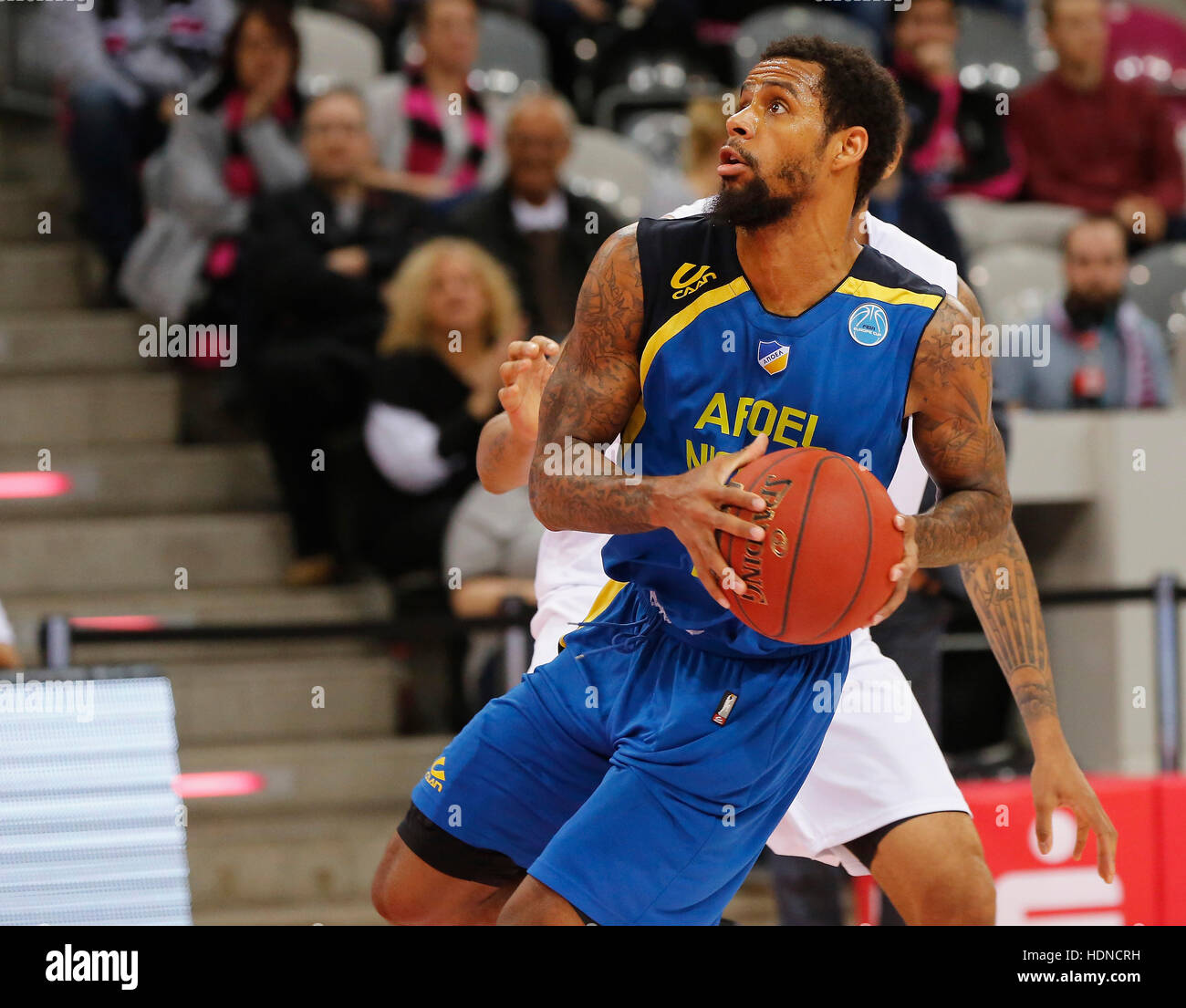Editor's Notes: "FIBA Europe Cup: An In-Depth Analysis Of The Tournament's History, Format, And Impact" have published today, June 28, 2023. This topic is important to read because it provides a comprehensive overview of the FIBA Europe Cup, including its history, format, and impact on European basketball.
After thorough analysis and diligent information gathering, we have concluded that FIBA Europe Cup: An In-Depth Analysis Of The Tournament's History, Format, And Impact is essential reading to understand this important basketball tournament better.
Transition to main article topics:
FAQ
This comprehensive analysis provides detailed insights into the FIBA Europe Cup's history, format, and impact. To address frequently asked questions, this section offers clarifications and answers.

FIBA Europe Cup - BC Pärnu Sadam - Source bcparnu.ee
Question 1: What is the history of the FIBA Europe Cup?
The tournament was originally known as the FIBA Saporta Cup in 1966, honoring the Real Madrid president Raimundo Saporta, who played a pivotal role in developing European basketball. It underwent several name changes and format revisions before adopting the current moniker in 2016.
Question 2: How is the tournament structured?
The FIBA Europe Cup employs a multi-stage format. Teams qualify through their domestic leagues and compete in a regular season followed by knockout playoffs. The tournament concludes with a Final Four event to determine the champion.
Question 3: What is the significance of the FIBA Europe Cup?
The FIBA Europe Cup serves as a prestigious competition for clubs outside of the top-tier EuroLeague and EuroCup. It provides a platform for teams to gain international experience and showcase their talent, fostering the growth of European basketball.
Question 4: Who are the most successful teams in the FIBA Europe Cup?
Several clubs have etched their names in the annals of the FIBA Europe Cup. Joventut Badalona, Maccabi Tel Aviv, and ASVEL Basket hold the record for most titles, with three each.
Question 5: How does the FIBA Europe Cup impact European basketball?
The tournament plays a vital role in fostering competition and raising the level of basketball across Europe. It provides opportunities for developing players and teams to test themselves against international opponents, contributing to the overall health and excitement of the sport.
Question 6: What is the future of the FIBA Europe Cup?
The FIBA Europe Cup continues to evolve and adapt to the changing landscape of European basketball. Its popularity and significance are expected to grow in the years to come, as it remains a crucial platform for clubs and players to compete at the highest level.
This in-depth analysis offers a comprehensive understanding of the FIBA Europe Cup and its impact on European basketball.
Read the full article to delve into the tournament's rich history, captivating format, and far-reaching implications.
Tips
The FIBA Europe Cup is an international basketball tournament for European clubs. It is the third-tier competition in European basketball, behind the EuroLeague and the EuroCup. The tournament was founded in 1966 as the FIBA European Cup Winners' Cup, and was renamed to the FIBA Europe Cup in 2016. FIBA Europe Cup: An In-Depth Analysis Of The Tournament's History, Format, And Impact
Here are some tips for watching the FIBA Europe Cup:
Tip 1: Learn about the teams and players.
There are 24 teams competing in the FIBA Europe Cup, from countries all over Europe. Each team has its own strengths and weaknesses, so it is helpful to do some research before watching a game. You can find information about the teams and players on the FIBA Europe Cup website.
Tip 2: Watch the games online or on TV.
The FIBA Europe Cup is broadcast in many countries around the world. You can find a list of broadcasters on the FIBA Europe Cup website. If you cannot find a broadcaster in your country, you can watch the games online on the FIBA Europe Cup website.
Tip 3: Follow the FIBA Europe Cup on social media.
The FIBA Europe Cup has a strong presence on social media. You can follow the tournament on Twitter, Facebook, and Instagram to get the latest news, highlights, and interviews.
Tip 4: Bet on the FIBA Europe Cup.
If you are interested in betting on the FIBA Europe Cup, there are many online sportsbooks that offer odds on the games. However, it is important to remember that betting on sports is a form of gambling, and you should only bet what you can afford to lose.
Tip 5: Enjoy the games!
The FIBA Europe Cup is a great tournament to watch, and it is a great way to learn about European basketball. So sit back, relax, and enjoy the games!
Summary: The FIBA Europe Cup is a great way to learn about European basketball and to watch some of the best teams in Europe compete. By following these tips, you can make the most of your FIBA Europe Cup experience.
Transition: For more in-depth information on the FIBA Europe Cup, please read the following article.
FIBA Europe Cup: An In-Depth Analysis Of The Tournament's History, Format, And Impact
The FIBA Europe Cup, an esteemed international basketball competition, boasts a rich history, a well-defined format, and a profound impact on the European basketball landscape. Six essential aspects that capture its multifaceted nature include:
- Genesis and Evolution: Tracing the origins and growth of the tournament, from its inception to its current standing.
- Competition Structure: Outlining the format and regulations governing the tournament, including team qualification, group stages, and playoffs.
- National Representation: Exploring the tournament's role as a platform for emerging national teams, fostering competition and player development.
- Club Participation: Examining the significance of club participation, the impact on domestic leagues, and opportunities for club growth.
- Talent Development: Highlighting the tournament as a proving ground for young players, showcasing their skills and potential.
- Legacy and Impact: Assessing the tournament's lasting impact on European basketball, its contribution to the sport's popularity and the legacy it leaves behind.
These key aspects collectively provide a comprehensive understanding of the FIBA Europe Cup, its historical significance, operational structure, and its multifaceted influence on the European basketball ecosystem.

Fiba Europe Cup High Resolution Stock Photography and Images - Alamy - Source www.alamy.com
FIBA Europe Cup: An In-Depth Analysis Of The Tournament's History, Format, And Impact
The FIBA Europe Cup, launched in 2015, is the third-tier club basketball competition in Europe. Organized by FIBA, the cup is a unique platform that connects teams from across the continent, showcasing diverse playing styles and fostering international camaraderie. The tournament's history, format, and impact on the European basketball landscape warrant in-depth examination.

Copenhagen to Host Two FIBA Europe Cup Events – SportsTravel - Source www.sportstravelmagazine.com
The FIBA Europe Cup has evolved over the years, with changes to its qualification criteria, team allocation, and knockout rounds. These adjustments reflect FIBA's commitment to refining the tournament's structure, ensuring fair representation and competitive balance. The tournament's format is designed to provide opportunities for teams of varying strengths, enabling them to compete against peers and strive for European glory.
The FIBA Europe Cup has a profound impact on European basketball. It offers a stage for emerging talents, providing them with a platform to showcase their skills and potentially attract the attention of top-tier clubs. The tournament also supports the development of domestic leagues, as teams qualify through their national championships, fostering a sense of national pride and competition.
Key insights from the analysis include the FIBA Europe Cup's role in fostering international cooperation, promoting player development, and enhancing the overall quality of European basketball. Understanding these connections allows for informed decision-making and strategic planning for the future of the tournament.
Conclusion
The FIBA Europe Cup has established itself as a valuable tournament within the European basketball ecosystem. Its history, format, and impact have shaped the tournament into a platform for competition, development, and international collaboration. As the tournament continues to evolve, it is poised to play an increasingly significant role in the future of European basketball.
The FIBA Europe Cup remains a testament to the power of sport in connecting people and fostering camaraderie across borders. It serves as a model for successful international sports competitions and a source of inspiration for aspiring basketball players worldwide.